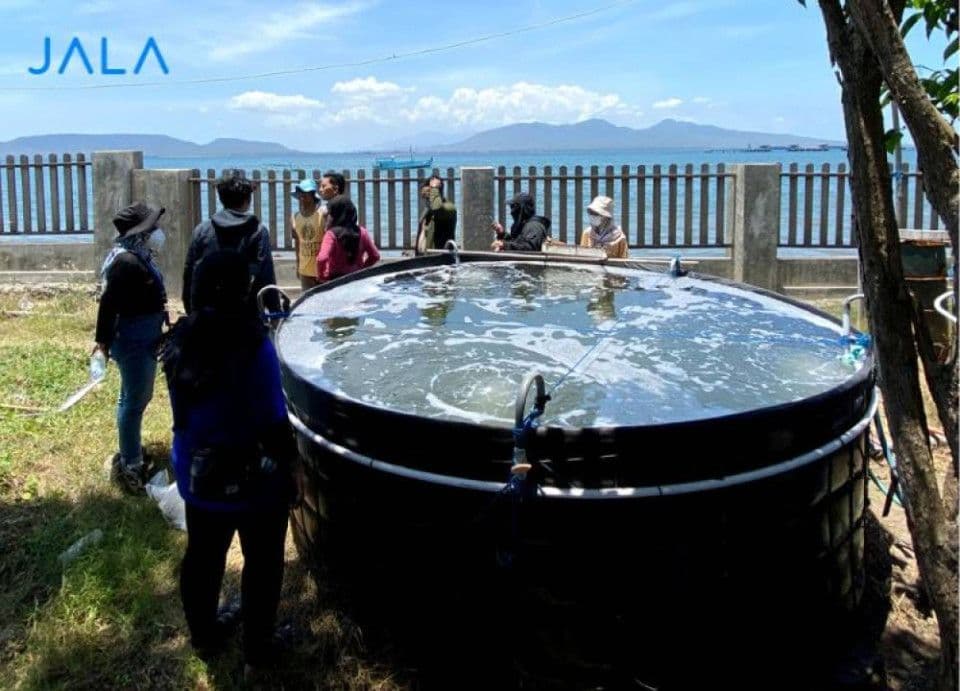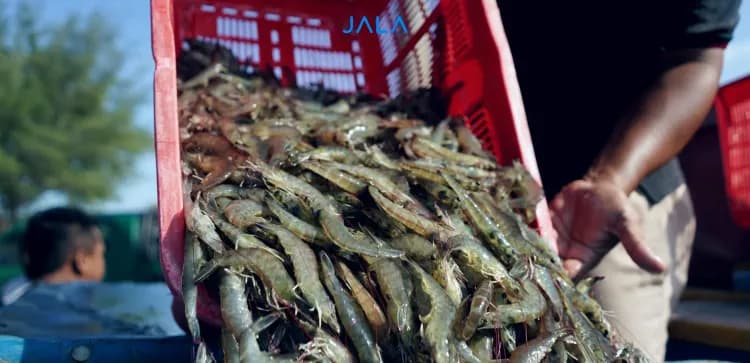
The national aquaculture industry has become one of the main sectors of investment, especially the shrimp industry, from the tiger shrimp (Penaeus monodon) era which has now shifted to vannamei shrimp (Litopenaeus vannamei).
The vannamei shrimp cultivation business is seen as a low-risk investment which is not affected by the COVID-19 pandemic, a time during which multiple industries faltered.
Shrimp cultivation remains developing with innovations, from traditional, traditional plus, semi-intensive, intensive, and super-intensive ponds. The supporting technology is continuously updated, from construction, installation, aeration, and standard operating procedures. There are also different types of shrimp cultivation, such as:
- Plankton system, capable of producing 3 kg/m³ of shrimp
- Biofloc system, capable of producing 5 kg/m³ of shrimp
- RAS (Recirculation Aquaculture System), capable of producing 10 kg/m³ up to 30 kg/m³ of shrimp
In recent years, the global shrimp market is dominated by Ecuador, India, Vietnam, and Indonesia, which remains the 4th highest producer.
The good news is, Indonesia’s government is aiming for shrimp export to reach 2 million MT. The opportunities for expansion and investment are getting more aggressive, and many aquaculture startups have launched in Indonesia, including JALA.
Farm developers in the shrimp industry implement the concept of smart farming/millennial ponds with biofloc system and RAS to reach a productivity of 100 tons/ha. Indonesia is expected to be the leader of the global shrimp industry by increasing national productivity.
The Solution for High Productivity: Circular Ponds
One of the solutions to improve shrimp farm productivity is through circular pond technology. There are several benefits of circular ponds over conventional ponds, such as:
- Suitable for sandy areas as they are more abrasion-resistant
- Suitable for areas that do not dry up easily
- More uniform distribution of feed and organic materials without having to walk around the pond to spread feed and treatments
- Cheaper construction as digging is not necessary
- High stocking density, up to 200 shrimp/m2
- Applicable for smaller farms with a size of 200 m² and a diameter of 16 m or less
- Easier handling of waste and inorganic materials
- Better hygiene than other pond technology
- Higher productivity
- More profitable (FCR can be minimized with floc system)
- Probiotics and water bioremediation can minimize water pollution
- Sustainable aquaculture is feasible
Circular ponds are a promising solution to increase Indonesia’s shrimp productivity and reach the export target of 2 million MT. Having various benefits such as better feed distribution, more affordable costs, and lower FCR value, circular ponds can be used by intensive and super-intensive shrimp farmers to increase their shrimp production.





